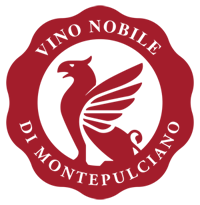CLIMATE CONDITIONS
The year began with a winter characterised by slightly lower than average temperatures, along with spells of rainfall that were abundant and consistent enough to replenish and guarantee excellent water reserves in the soil. Spring 2013 was characterised by quite peculiar conditions: temperatures were around the average and there was abundant rainfall, but there were reasonably long dry periods between the spells of heavy rain, allowing producers to carry out the necessary work in the vineyards in good time. During the month of March recorded temperatures were average for the time of year, and the Sangiovese started bud break in the first three weeks of April. The subsequent growth of the shoots proceeded more or less as usual at this time.
Beginning in the month of May, we experienced temperatures below the average for the period, with frequent and abundant rainfall, causing all the development phases of the plants to slow down, so much so that the flowering and subsequent fruit setting took place about a week later than the average. This tardiness in the vegetative phases also lead to a slowing down of the incubation periods of fungal diseases, conditions that allowed producers to keep the health of the vineyards in check relatively easily through July and August. The summer months weren’t too hot and dry, and there were sporadic storms, some of which were very turbulent.
Veraison was noted from the beginning of August and over the following three weeks, putting progress back on course with Sangiovese’s usual tardive nature. Development had been ten to twelve days behind the average, but this was made up for with the excellent weather conditions recorded in the month of September. Daytime temperatures of 28-30 degrees and favourable temperature ranges during the night meant that the ripening of the grapes proceeded at an accelerated pace, in terms of both sugar ripeness and phenolic ripeness.
Thus, by harvest time, the grapes had a reasonable sugar concentration, good acidity, and a good phenolic structure. The harvest began around the 20th of September, and continued into the first week of October.
In conclusion, this is a late vintage compared to the harvests we have become accustomed to recently, but not too late for an innately tardive vine variety like the Sangiovese. A late vintage like this can present a challenge, but when cultivated with care it is endowed with a unique character.
The Wines of 2013
On the whole, this was a demanding vintage from an agronomic point of view, and also from an enological point of view: carefully evaluating the best time to harvest the grapes was critical.
At the moment the wines are very intriguing, with average alcohol levels between 13% and 14%, and good acidity with slightly elevated pH levels. The colours are excellent, the aromas are good and the wines are also decently structured, with quite soft tannins. Cellar procedures are also very important, especially regarding maceration times. The 2013 vintage wines are elegant and fragrant, with good acidity and reasonable alcohol levels: there is a notable presence and persistence of the olfactory characteristics typical of the vine variety.


